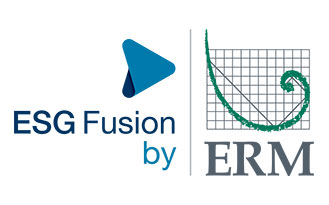
A new survey reveals what private sector organizations are currently spending on measuring and managing key climate change data and disclosure activities. The survey found that on average corporate issuers are spending $533,000 annually on climate-related disclosure, while institutional investors are spending an average of $1,372,000 annually to collect, analyze, and report climate data to inform their investment decisions.
Conducted by the SustainAbility Institute by ERM (ERM) for Ceres and Persefoni, the survey was designed to help inform mandatory and voluntary climate disclosure guidelines and methods being developed by regulators, standard setters, and individual firms. Specifically, the survey findings can be used to inform responses to the U.S. Securities and Exchange Commission’s (SEC) proposed Rules on Enhancement and Standardization of Climate-Related Disclosures for Investors. The SEC’s rules were developed to support investors by standardizing the reporting of climate-related financial risk by entities registered with the SEC. The SEC has invited those impacted by the proposed rules and other interested parties to submit feedback within its comment period, which presently is scheduled to run until 17 June 2022.
The ERM survey provides insight into what issuers currently spend on climate-related disclosure activities that would be required under the SEC’s proposed rules. Its assessment of current average annual issuer costs is similar to the SEC’s estimate of $530,000 in annual issuer costs after the first year of implementation.
Along with discussions of costs, the survey asked respondents to rate the potential benefits of climate-related disclosures and impact assessments. For issuer respondents, the highest ranked benefit was better performance in meeting sustainability, climate, ESG, and SDG goals, followed by better access to data capable of enhancing corporate strategy. Some issuers also cited “lower cost of capital” as a benefit, and a correlation was found between spending more on overall climate-related disclosure and recognizing a lower cost of capital.
For investor respondents, the highest ranked benefit was meeting client demand for climate disclosures and related products, followed by better performance in meeting sustainability, climate, ESG, and SDG goals.
Mark Lee, Director of the SustainAbility Institute by ERM said: “The U.S. is entering a new era of climate change reporting, driven by the need for clear and consistent data that will help investors to assess and compare organizations’ financial exposure and risk management strategies during the transition to a decarbonized economy.”
“This survey shows that both companies and investors recognize the benefits of disclosing their climate-related activities. It also offers a rare glimpse into issuer and investors’ current investments in measurement, analysis, and disclosure of climate-related information, which will be a valuable resource for organizations considering their response to the proposed SEC rules.”
Kentaro Kawamori, CEO of Persefoni said: "There has been considerable discussion regarding the potential costs associated with compliance with the SEC's proposed rule on climate disclosures. Helping fill the information gap, ERM's survey found that what corporate issuers already spend on the climate-related disclosure activities that would be required by the SEC is comparable to the SEC’s own assessment.”
“Persefoni has proven that climate disclosure costs drop significantly with the use of audit-grade carbon accounting software, and we believe that economies of scale will reduce costs further as more companies start disclosing. Persefoni is proud to partner with ERM and Ceres on this important work, and we hope that readers consider this information as they submit for public comment."
Isabel Munilla, Director of U.S. Financial Regulation at Ceres said: “Companies are making important investments to produce climate-related risk information, but disclosures vary in quality and are hard to compare. At the same time, investors are spending money to process and use information that’s often not investor-grade. It’s clear that the market isn’t getting the full value of these investments, and that the SEC’s climate disclosure rules can help deliver important benefits.
“That’s why we commissioned ERM’s independent analysis. The survey helps clarify where the market is already placing its climate disclosure bets. In particular, the study’s quantitative estimates of investor status quo costs illuminate the disclosure reality on which the SEC rules are being built. We encourage all stakeholders to take a look.”
Biggest areas of spend for climate-related disclosure activities
Among issuer respondents that shared their costs for climate-related disclosure activities, the three largest cost categories are:
- Greenhouse gas (GHG) analysis and/or disclosures ($237,000 average annual cost for those reporting spend in this category).
- Climate scenario analysis and/or disclosure ($154,000 average annual cost for those reporting spend in this category).
- Internal climate risk management controls, namely the costs related to integrating climate risk into business processes ($148,000 average annual cost for those reporting spend in this category).
The three largest cost categories among investor respondents are:
- External ESG ratings, data providers, and consultants ($487,000 average annual cost for those reporting spend in this category).
- In-house, outside counsel, and proxy solicitor analysis of shareholder voting for ballot items related to gathering climate risk management information ($405,000 average annual cost for those reporting spend in this category).
- Internal climate-related investment analysis ($357,000 average annual cost for those reporting spend in this category).
Areas of spend beyond proposed SEC rule requirements
ERM’s survey included two cost categories not directly aligned with potential SEC disclosure requirements. Firstly, the survey examined costs related to proxy responses to climate-related shareholder proposals, which have become a common feature of annual proxy season. Almost half (49%) of issuer respondents reported costs in this category, generating an average annual spend of $80,000.
Secondly, the survey explored costs involved in voluntarily taking on additional climate-related analyses and disclosures such as developing low-carbon transition plans, undertaking stakeholder engagement and government relations, and the preparation of related disclosures. Over three quarters (77%) of issuer respondents indicated spend in this category, with an average reported spend of $130,000. The SEC proposal would not require companies to develop transition plans, and disclosure of transition plans would only be required where companies have chosen to develop them.
When these activities which are not required under the SEC’s proposed rules are taken into account, the survey finds that corporate issuers currently spend an average of $677,000 annually on climate-related disclosure activities.
Measurement of Scope 3 emissions
ERM’s survey asked all issuer and investor survey respondents to indicate whether they currently measure their Scope 3 GHG emissions as a possible indicator of their overall commitment to using climate-related metrics.
For issuer respondents, 74% reported that they currently measure Scope 3 emissions.
Among investor respondents, for whom Scope 3 consists largely of financed emissions (i.e. emissions from assets in which the firm invests via debt or equity), 44% reported that they currently track their Scope 3 emissions.
About the SustainAbility Institute by ERM
The SustainAbility Institute is ERM’s primary platform for thought leadership on sustainability. Its purpose is to define, accelerate, and scale sustainability performance by developing actionable insight for business. The Institute identifies innovative solutions to global sustainability challenges built on ERM’s experience, expertise, and commitment to transformational change.
As the largest global pure play sustainability consultancy, ERM partners with the world’s leading organizations to create innovative solutions to sustainability challenges and unlock commercial opportunities that meet the needs of today while preserving opportunity for future generations.
ERM’s diverse team of 7,500+ world-class experts in over 150 offices in more than 40 countries supports clients across the breadth of their organizations to operationalize sustainability. Through ERM’s deep technical expertise, clients are well positioned to address their environmental, health, safety, risk, and social issues. ERM calls this capability its “boots to boardroom” approach – a comprehensive service model that allows ERM to develop strategic and technical solutions that advance objectives on the ground or at the executive level.
About Ceres
Ceres is a nonprofit organization working with the most influential capital market leaders to solve the world’s greatest sustainability challenges. Through our powerful networks and global collaborations of investors, companies, and nonprofits, we drive action and inspire equitable market-based and policy solutions throughout the economy to build a just and sustainable future. For more information, visit ceres.org and follow @CeresNews.
About Persefoni
Persefoni, Inc., is the leading Climate Management & Accounting Platform (CMAP). The company’s Software-as-a-Service solutions enable enterprises and financial institutions to meet stakeholder and regulatory climate disclosure requirements with the highest degree of trust, transparency, and ease. As the enterprise resource planning (ERP) of Carbon, the Persefoni platform provides users with a single source of carbon truth across their organization, enabling them to manage their carbon transactions and inventory with the same rigor and confidence as their financial transactions. Learn more at persefoni.com.
 View all
View all 


